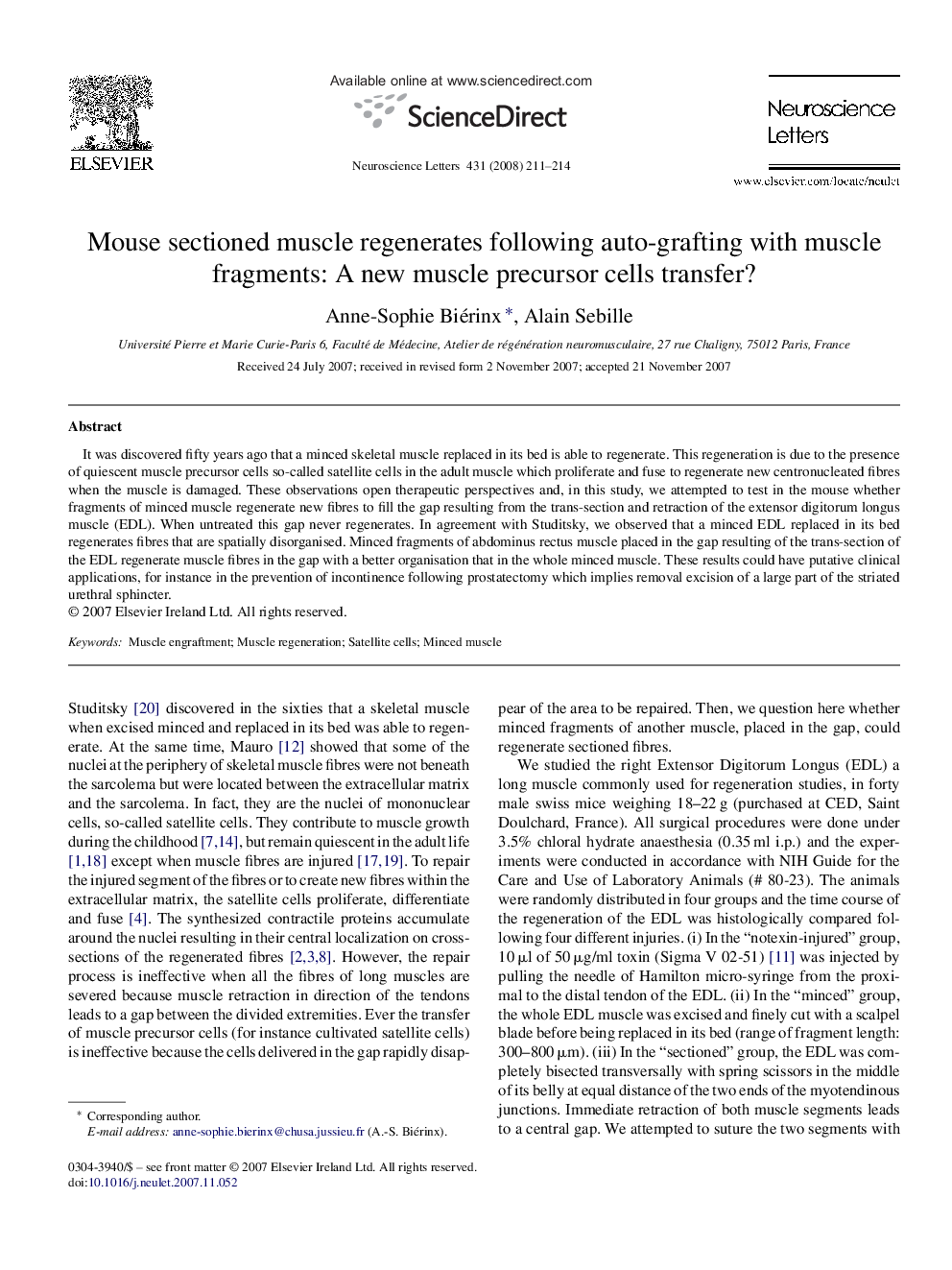| Article ID | Journal | Published Year | Pages | File Type |
|---|---|---|---|---|
| 6285861 | Neuroscience Letters | 2008 | 4 Pages |
Abstract
It was discovered fifty years ago that a minced skeletal muscle replaced in its bed is able to regenerate. This regeneration is due to the presence of quiescent muscle precursor cells so-called satellite cells in the adult muscle which proliferate and fuse to regenerate new centronucleated fibres when the muscle is damaged. These observations open therapeutic perspectives and, in this study, we attempted to test in the mouse whether fragments of minced muscle regenerate new fibres to fill the gap resulting from the trans-section and retraction of the extensor digitorum longus muscle (EDL). When untreated this gap never regenerates. In agreement with Studitsky, we observed that a minced EDL replaced in its bed regenerates fibres that are spatially disorganised. Minced fragments of abdominus rectus muscle placed in the gap resulting of the trans-section of the EDL regenerate muscle fibres in the gap with a better organisation that in the whole minced muscle. These results could have putative clinical applications, for instance in the prevention of incontinence following prostatectomy which implies removal excision of a large part of the striated urethral sphincter.
Keywords
Related Topics
Life Sciences
Neuroscience
Neuroscience (General)
Authors
Anne-Sophie Biérinx, Alain Sebille,
